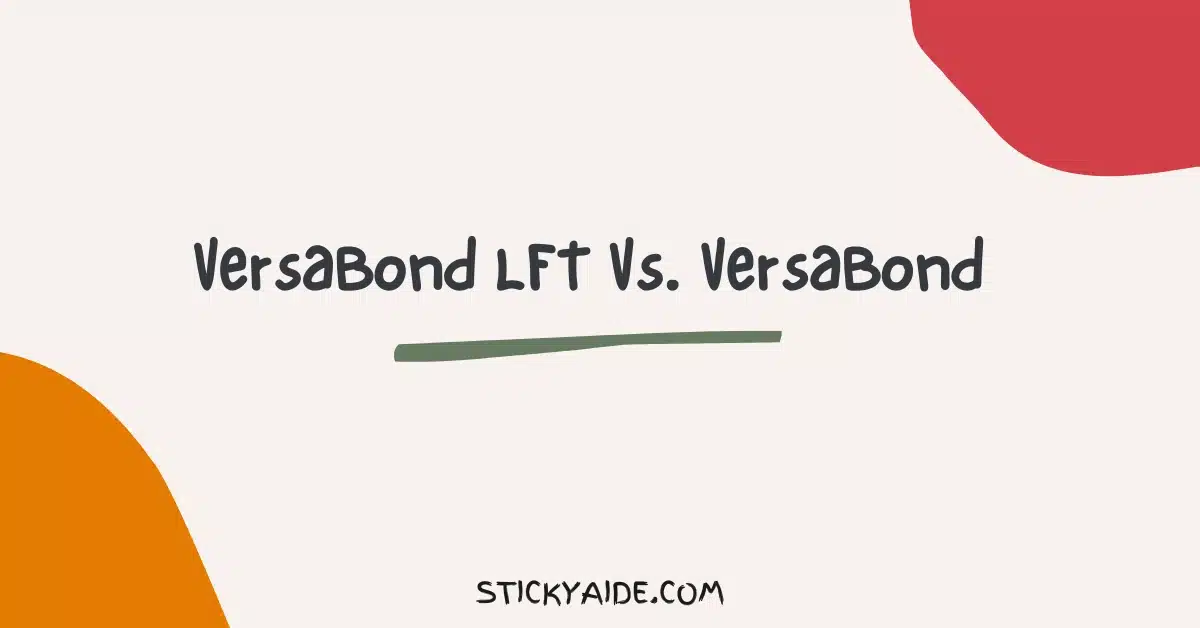It’s hard to choose tiles for your project, but it gets even tougher when you have to thinset them. There are several brands of thinset on the market. Two popular thinset mortars are VersaBond-LFT and VersaBond.
Custom Building Products manufactures both products, but their performance in certain applications may be affected by some key differences. It’s best to use VersaBond LFT when installing large format tiles. In contrast, VersaBond is a reliable option when it comes to smaller tiles.
I will try to draw a conclusion to the battle between VersaBond LFT Vs. VersaBond by analyzing them thoroughly.
Read More: Flexbond Vs. Versabond
VersaBond LFT Vs. VersaBond

Overview of VersaBond-LFT Professional Large Format Tile Mortar
Versabond-LFT is a professional medium bed mortar that is specially formulated for large format tiles. This polymer modified mortar does not sag or slump when used with large format porcelain, ceramic, and natural stone tiles. Versabond-LFT also meets or exceeds the requirements of ANSI A118.4HT and A118.11.
Versabond-LFT can be applied to horizontal surfaces up to 34″ (19mm) thick due to its non-slumping formula to eliminate lippage. It is suitable for floors and walls without the need for additives. Also, Additional additives in VersaBond-LFT enhance its performance with large format tiles.
Read More: Versabond Vs. Mapei
Overview of VersaBond Professional Thinset Mortar
VersaBond is an all-purpose mortar that costs less than conventional mortars. It is approved for industry-recommended interior and exterior applications. With its polymer modification, this thinset mortar provides good bond strength for tile and floor projects. The VersaBond curing agent dries very quickly, even at cold temperatures. Additionally, it exceeds the requirements of ANSI A118.4 and A118.11.
There is no need for additives to make it adhere to most surfaces. It is useful for most standard installations. Designed for heavy loads in high-traffic areas, such as commercial interiors, its professional formula makes it an ideal choice for such applications. Due to its faster drying time, Versabond makes grouting easier.

Differences Between Versabond-LFT and VersaBond
You have to choose between VersaBond-LFT and VersaBond based on the size of your tiles. You should use VersaBond LFT when installing large format tiles. A lasting bond is assured by its additional additives, which are essential for larger tiles. Alternatively, VersaBond is an excellent option when you need to install smaller tiles.
Large format tiles with a side thickness of 15 inches or larger are especially suited for VersaBond-LFT. Comparatively, VersaBond is a thinset mortar that’s great for mosaics, smaller tiles, and many other tile types.
VersaBond LFT is enhanced with additional additives for large format tiles. As bigger tiles get heavier and bigger, these additives give the bond more strength and flexibility. VersaBond doesn’t have these extra additives.
VersaBond LFT requires a larger trowel size than VersaBond because large format tiles require a thicker mortar bed. A 1/2″ x 1/2″ square notch trowel is recommended for VersaBond LFT, while a 1/4″ x 1/4″ square notch trowel or a 1/2″ x 1/2″ square notch trowel is recommended for VersaBond.
Basically, Large format tiles are specifically suited to VersaBond-LFT, whereas standard tiles are suitable for VersaBond. To ensure a strong and lasting bond between tiles and mortar, it’s important to choose the right thinset mortar.
Can I Use a Regular Thinset For LFT?
The use of regular thinset for large format tiles (LFT) is not recommended. Due to the added weight and size of large format tiles, a mortar with high bond strength and flexibility is required. It is possible for regular thinset to result in improper bonding, slippage, and even breakage when applied to LFT.
What Is the Ratio of Water to VersaBond?
The recommended ratio of water to VersaBond is approximately 6 quarts (5.68 L) of clean water per 50 pounds (22.68 kg) bag of mortar. Allow the mixture to slake or stand for 5 – 10 minutes, then stir again and use. Stir occasionally, but don’t add more water.
Can VersaBond-LFT Be Used on Walls?
Yes, VersaBond-LFT is a versatile thinset mortar designed for use in both wall and floor tile installations.
Is Versabond Good for Showers?
Yes, VersaBond is a good option for use on shower floors.
Last Opinion
Both VersaBond LFT and VersaBond are well-known thinset mortar from custom building products. VersaBond LFT has been specifically formulated to enhance performance with large format tiles and contains additional additives. VersaBond is a versatile mortar that works with standard size tiles.
Here, I tried to give you an overview of these two thinset mortar by comparing VersaBond LFT Vs. VersaBond. Hopefully, now you have gained the knowledge you need to understand their differences.

